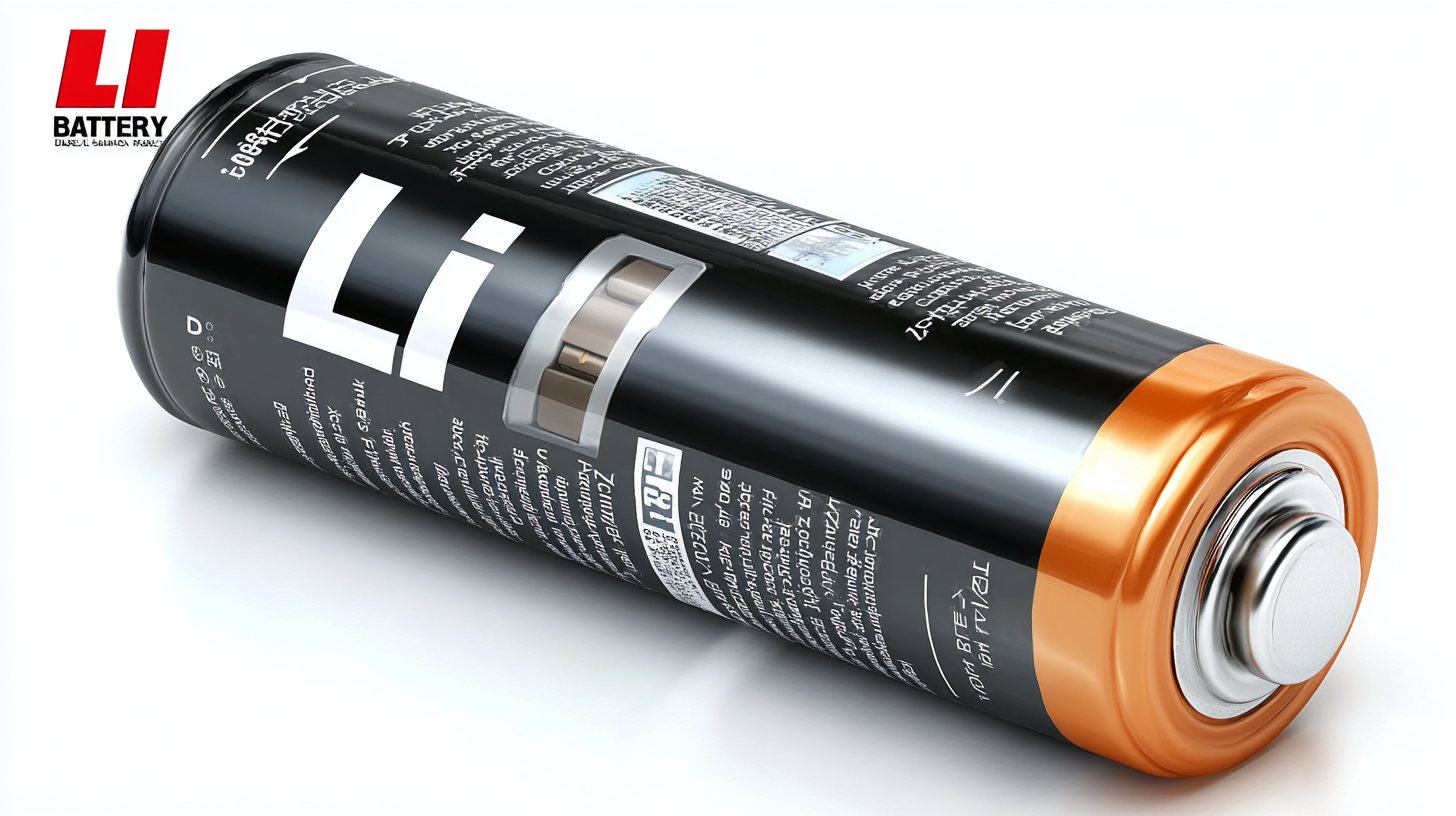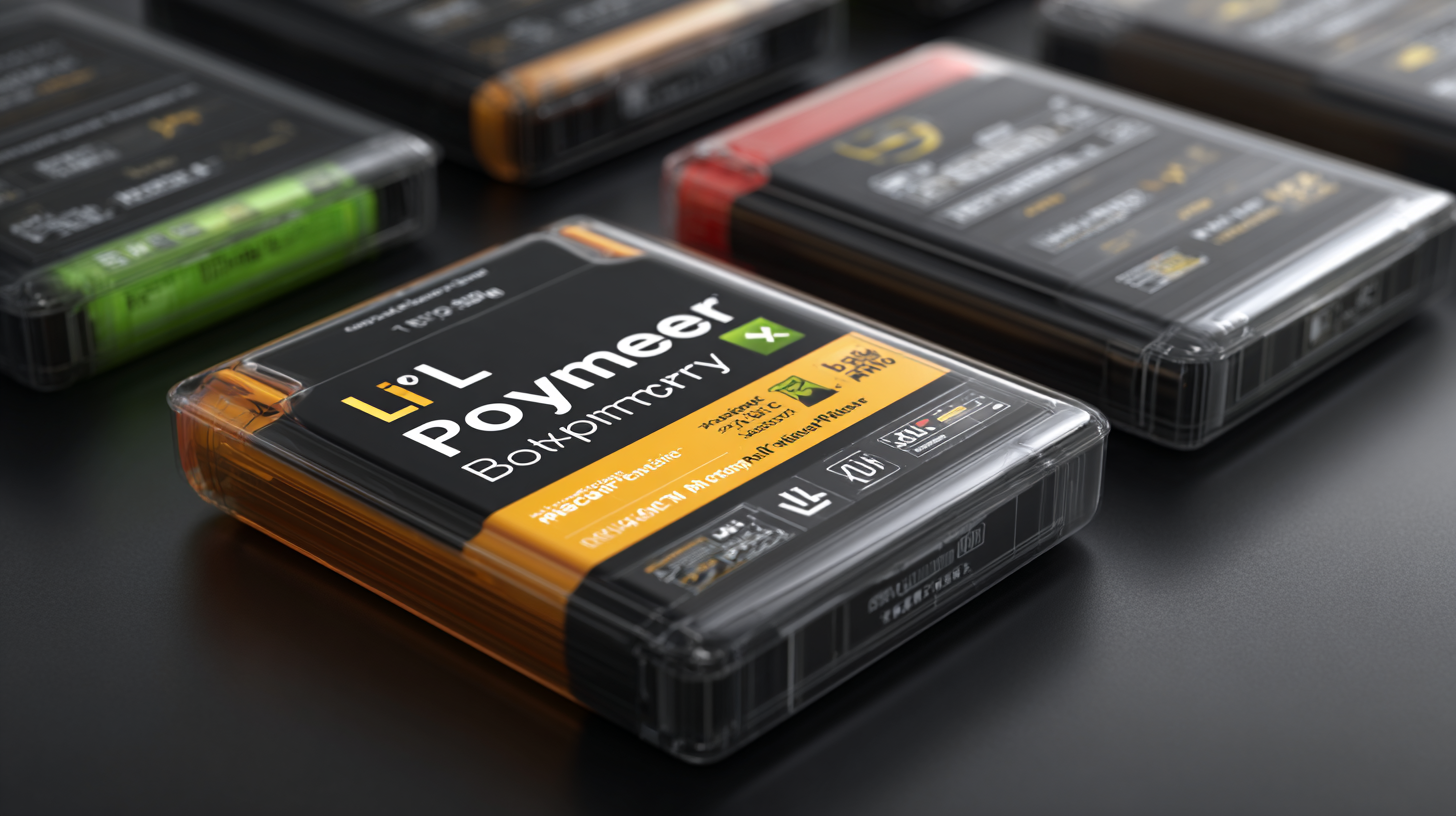
2025 Trends and Innovations in Best Li Polymer Battery Usage and Maintenance Guide
As we approach 2025, the landscape of energy storage continues to evolve, with Li Polymer Batteries leading the charge in innovation and efficiency. According to a recent market analysis by Grand View Research, the global lithium polymer battery market is expected to reach $15.2 billion by 2025, driven by advancements in technology and increased demand across various sectors, including consumer electronics and electric vehicles. The rise of renewable energy sources and the push for sustainable practices further emphasize the critical role of Li Polymer Batteries in modern applications. This blog aims to explore the emerging trends and innovations shaping the usage and maintenance of these batteries, providing valuable insights for both consumers and industry professionals on how to optimize performance and extend lifespan in this rapidly advancing field.

Emerging Innovations in Li Polymer Battery Technology for 2025
As we look ahead to 2025, the landscape of lithium polymer (LiPo) battery technology is set to witness groundbreaking innovations that will significantly enhance their performance and usability. According to a report by MarketsandMarkets, the LiPo battery market is anticipated to grow from USD 12.7 billion in 2020 to USD 24.9 billion by 2025, reflecting a CAGR of 14.5%. This growth is driven by the increasing demand for lightweight and high-capacity energy sources across various sectors, including consumer electronics, electric vehicles, and renewable energy storage.
Emerging innovations such as solid-state battery technology are poised to revolutionize LiPo batteries, paving the way for greater energy density and safety. Solid-state batteries eliminate the flammable liquid electrolyte in traditional LiPo batteries, thus reducing fire hazards while enhancing cycle life. A study from the International Energy Agency suggests that by integrating solid-state technology, energy densities could reach up to 500 Wh/kg, compared to the current average of 150-250 Wh/kg for conventional LiPo batteries. Furthermore, advancements in nanotechnology are enabling faster charging times and improved thermal management, making LiPo batteries not only more efficient but also more reliable for everyday applications.
Best Practices for Extending the Lifespan of Li Polymer Batteries
When it comes to extending the lifespan of lithium polymer (LiPo) batteries, adhering to best practices is crucial. Research from the International Energy Agency highlights that proper maintenance can increase a battery's lifespan by 30-50%. Regular monitoring of charge cycles and avoiding deep discharges are fundamental. The optimal discharge range for LiPo batteries is between 20% and 80%, which not only maintains capacity but also minimizes degradation.

Additionally, temperature management plays a significant role in performance and longevity. Studies indicate that operating LiPo batteries at temperatures between 20°C and 25°C can enhance their lifespan significantly. High temperatures can accelerate chemical reactions within the battery, leading to premature failure. It is also essential to store these batteries at a partially charged state (around 40%) if they are not in use, as this can prevent capacity loss. By following these guidelines, users can efficiently maintain their LiPo batteries, ensuring they remain effective for longer periods while contributing to sustainability in energy consumption.
Key Trends in Li Polymer Battery Applications Across Industries
In 2025, the applications of
Lithium Polymer (Li-Po)
batteries are rapidly expanding across various industries, with numerous innovations enhancing their usage and maintenance. One of the most notable trends is in the consumer electronics sector, where ultra-slim designs and high energy density enable manufacturers to create lighter and more efficient devices. Wearable technology, such as smartwatches and fitness trackers, increasingly rely on Li-Po batteries for their lightweight characteristics and ability to maintain longer charge cycles, driving demand for advanced battery management systems.
In the automotive industry, electric vehicles (EVs) are experiencing a paradigm shift with the incorporation of Li-Po batteries. Their ability to provide quicker charging times and improved longevity makes them a preferred choice for manufacturers aiming to enhance EV performance. As these vehicles become more ubiquitous, understanding proper maintenance will be crucial for consumers.

Tips for Maintaining Li-Po Batteries: Always store your batteries in a cool, dry place and avoid temperatures above 40°C to extend their lifespan. Additionally, regularly check the battery's voltage and avoid deep discharges, as this can lead to irreversible damage. By implementing these simple practices, users can ensure their Li-Po batteries remain reliable and efficient for years to come, supporting the growing innovations across all sectors.
Essential Safety Tips for Handling and Maintaining Li Polymer Batteries
When it comes to handling and maintaining Li Polymer batteries, safety should always be the top priority. These batteries are popular due to their high energy density and lightweight characteristics, but they can pose risks if not managed correctly. One essential safety tip is to always use a compatible charger. Mismatched chargers can lead to overcharging, overheating, and potentially cause the battery to swell or even catch fire. Always check the voltage and amperage ratings of your charger before plugging it in.
Additionally, proper storage is crucial for maintaining the integrity of Li Polymer batteries. They should be kept in a cool, dry place, away from direct sunlight and extreme temperatures. Ideal storage conditions help prevent chemical reactions within the battery that could lead to leakage or failure. Furthermore, it’s vital to regularly inspect batteries for any signs of physical damage, such as dents or punctures, which could compromise their safety. By following these essential safety tips, users can ensure a longer lifespan for their Li Polymer batteries while minimizing the risks involved in their usage.
2025 Trends and Innovations in Best Li Polymer Battery Usage and Maintenance Guide - Essential Safety Tips for Handling and Maintaining Li Polymer Batteries
| Trend/Innovation | Description | Safety Tip |
|---|---|---|
| Smart Battery Management Systems | Integration of IoT for real-time monitoring of battery health and performance. | Always monitor battery temperature and voltage levels to avoid overheating. |
| Fast Charging Technology | New advancements reduce charging time significantly without compromising lifespan. | Use manufacturer-recommended chargers to ensure safety and compatibility. |
| Recycling and Sustainability Practices | Growing focus on recycling Li Polymer batteries to reduce environmental impact. | Dispose of old batteries at certified recycling centers to prevent hazards. |
| Lightweight and Flexible Designs | Improving design for better integration into various devices while maintaining capacity. | Avoid puncturing or bending batteries to prevent leaks or short circuits. |
| Enhanced Safety Features | New designs incorporate features like pressure vents and cutoff systems for safety. | Regularly inspect batteries for any physical damage or swelling. |
Future Outlook: The Role of Sustainability in Li Polymer Battery Development
As the world moves towards a more sustainable future, the development of Li Polymer batteries is increasingly focusing on eco-friendly practices. The adoption of renewable energy sources and responsible material sourcing in battery production are pivotal in reducing the environmental impact. By utilizing advanced recycling methods, manufacturers are not only mitigating waste but also recovering valuable materials for future use, thereby closing the loop in battery life cycles.
To ensure your Li Polymer battery performs optimally while being environmentally conscious, consider these tips: First, always charge your battery using a certified charger to prevent potential damage. This practice not only extends battery life but also minimizes energy wastage. Second, store your battery in a cool, dry place to prevent degradation and enhance longevity, reducing the need for frequent replacements.
As we look to 2025, the integration of sustainable materials, such as bio-based polymers, will likely revolutionize Li Polymer battery technology. This shift will not only improve the efficiency of batteries but also align with global sustainability goals. By prioritizing green innovations, both consumers and manufacturers can contribute to a cleaner, more sustainable energy landscape.
